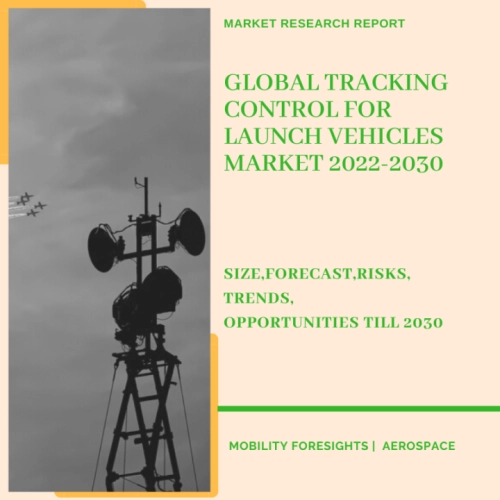
- Get in Touch with Us

Last Updated: Apr 25, 2025 | Study Period: 2022-2030
The position of the launcher is tracked by a variety of methods during a rocket launch, but the most accurate and reliable method is the telemetry data sent from the launcher to the ground control. Naturally, all such systems have redundancy, and on top of the redundant on-board sensors, sensor boards, and communications subsystems, their accuracy and dependability are continuously monitored in real time by use of secondary, even tertiary systems.

With different launchers and even different missions, these tracking and tracking control systems' precise configurations would change significantly.The tracking system receives ground-based telemetry data for controls and redundancy in case of malfunctions. Different ground-based tracking systems, including as radars, lidars, and even optical/visual trackers, may be used (e.g cameras)
The Global Tracking Control for Launch Vehicles market accounted for $XX Billion in 2021 and is anticipated to reach $XX Billion by 2030, registering a CAGR of XX% from 2022 to 2030.
The tool, known as the Space Data Integrator, will replace a system where much of the work is done manually when delivering air traffic control managers telemetry data on space vehicles.
The amount of time that aeroplanes must be routed around space operations may be reduced as a result of improved tracking capabilities by federal regulators of rocket launches and spacecraft returning to Earth.
A new tool automates the sending of information about a spacecraft's flight route to the country's air traffic control system almost instantly.The FAA first received flight telemetry data from Elon Musk's SpaceX, and since then, additional businesses, like Jeff Bezos' Blue Origin, have joined the programme.
| Sl no | Topic |
| 1 | Market Segmentation |
| 2 | Scope of the report |
| 3 | Abbreviations |
| 4 | Research Methodology |
| 5 | Executive Summary |
| 6 | Introduction |
| 7 | Insights from Industry stakeholders |
| 8 | Cost breakdown of Product by sub-components and average profit margin |
| 9 | Disruptive innovation in the Industry |
| 10 | Technology trends in the Industry |
| 11 | Consumer trends in the industry |
| 12 | Recent Production Milestones |
| 13 | Component Manufacturing in US, EU and China |
| 14 | COVID-19 impact on overall market |
| 15 | COVID-19 impact on Production of components |
| 16 | COVID-19 impact on Point of sale |
| 17 | Market Segmentation, Dynamics and Forecast by Geography, 2022-2030 |
| 18 | Market Segmentation, Dynamics and Forecast by Product Type, 2022-2030 |
| 19 | Market Segmentation, Dynamics and Forecast by Application, 2022-2030 |
| 20 | Market Segmentation, Dynamics and Forecast by End use, 2022-2030 |
| 21 | Product installation rate by OEM, 2022 |
| 22 | Incline/Decline in Average B-2-B selling price in past 5 years |
| 23 | Competition from substitute products |
| 24 | Gross margin and average profitability of suppliers |
| 25 | New product development in past 12 months |
| 26 | M&A in past 12 months |
| 27 | Growth strategy of leading players |
| 28 | Market share of vendors, 2022 |
| 29 | Company Profiles |
| 30 | Unmet needs and opportunity for new suppliers |
| 31 | Conclusion |
| 32 | Appendix |